The Das Keyboard 'Prime 13' & '4 Professional' Mechanical Keyboard Review
by E. Fylladitakis on January 10, 2017 8:00 AM ESTThe Das Keyboard 4 Professional Mechanical Keyboard
The Das Keyboard 4 Professional is a postmodern design, with the company trying to balance between a minimalistic and a futuristic appearance. The asymmetric body consists of an aluminum top cover and a plastic lower frame, with the company logo printed at the top right corner of the keyboard. Note that the top aluminum frame is for aesthetics only and not for mechanical cohesion, as the keyboard's keys and PCB are internally supported by a steel plate.
We received the US layout version of the Das Keyboard 4 Professional. It is a standard 104-key keyboard that fully adheres to the ANSI layout, with a normal bottom row. The bottom row of the keyboard has a 6.25× Spacebar and seven 1.25× bottom row keys. Virtually the only slight exception is that the company printed their own logo on the "Windows" keys instead of Microsoft's.
The keycap characters of the Das Keyboard 4 Professional are laser etched. Laser etching is a common feature among keyboards with price tags this high, yet we should note that there can be great quality differences between different manufacturers. With this process, the etching removes part of the paint on the keycap to reveal the unpainted plastic underneath; therefore the character cannot fade because the character itself actually is the only part of the keycap that is not painted. The paint of the keycap however can fade, meaning that the keycap will eventually start becoming smoother and blurry. In such cases, it all comes down on the quality of the keycap and its painting. Unfortunately, we cannot comment on the long term reliability of the process as it would take at least several weeks of testing. The relatively small characters on the keycaps of the Das Keyboard 4 Professional are very sharp.
There are no macro keys on the Das Keyboard 4 Professional and the keyboard has no reprogramming/layout changing capabilities - at least not without with assistance from third party software. At the top right corner of the keyboard we can see a large volume wheel and five low-profile buttons. Three of the buttons are for basic media controls, the round button is for muting the sound volume and the square button is, by default, sending a sleep command to the PC. This can be very handy for quickly putting a PC to sleep/lock and then waking it up from the keyboard without having to reach for the tower, especially in office/working environments where people cannot just leave their posts with their PCs on. The volume wheel is immaculately integrated onto the keyboard and has a satisfactorily clicky feeling when used.
The designer placed two USB 3.0 ports at the rear top right corner of the keyboard. Note that we rarely see USB 3.0 hubs on keyboards, even on some of the most expensive models out there. The Das Keyboard 4 Professional has only one thick cable that ends up to a single USB 3.0 connector. If the keyboard is connected to a USB 3.0 or 3.1 port, the port should provide enough power for the keyboard and its two USB 3.0 ports. If however it is connected to a USB 2.0/1.1 port, the hub might not operate properly.
Beneath the keycaps we find original Cherry MX switches. Our sample came with Brown switches but there is also a version with Blue switches for those that prefer to have a strong audible feedback. The strange part is that we found Costar-type bar stabilizers beneath the larger keys rather than the usual cross-type stabilizers we usually find on Cherry-based motherboards. There is very little difference on the actual feeling of the key when comparing the two stabilization methods, but keycaps with costar-type stabilizers tend to wiggle a little more and can be a pain to remove. Combined with the fact that the company does not provide a keycap puller, the designer really did not mean for the user to be removing the keycaps on this model.
Removing the core of the Das Keyboard 4 Professional from its exterior frame reveals that the keyboard is built on two PCBs. The main PCB features only the keys and is attached to a steel plate that provides the usual excellent mechanical strength that most mechanical keyboards have, while the second PCB is home for the extra buttons, the USB hub and the ICs.
A Nuvoton NUC123SD4AN0 microcontroller is the heart of the Das Keyboard 4 Professional. Its Cortex-M0 core runs up to 72 MHz and has 68 KB of flash memory. Although it would not be out of the ordinary on a fully-featured gaming keyboard, this microcontroller is a major overkill on a model that has no backlighting and lacks any programmability features. A VIA VL812-Q7 controller handles the USB 3.0 ports.


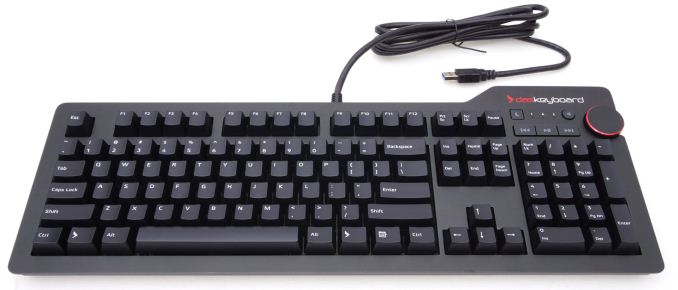
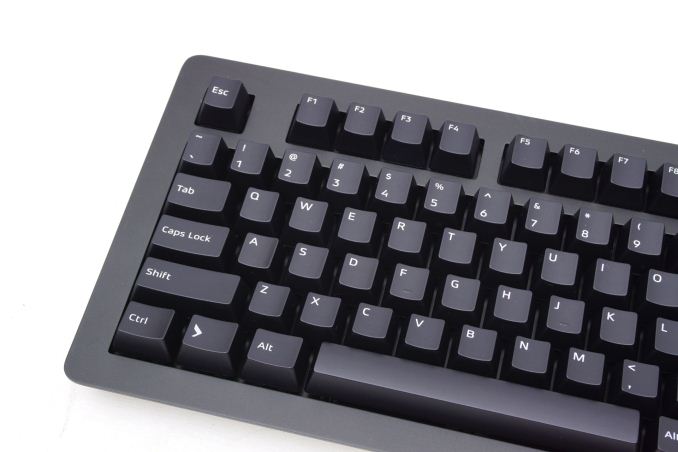
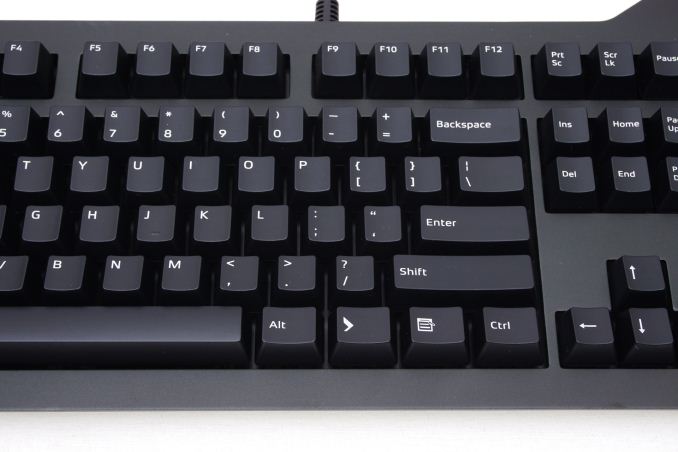

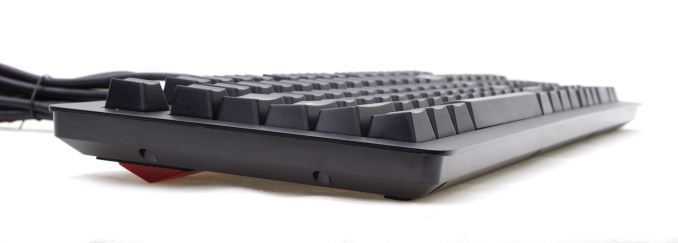
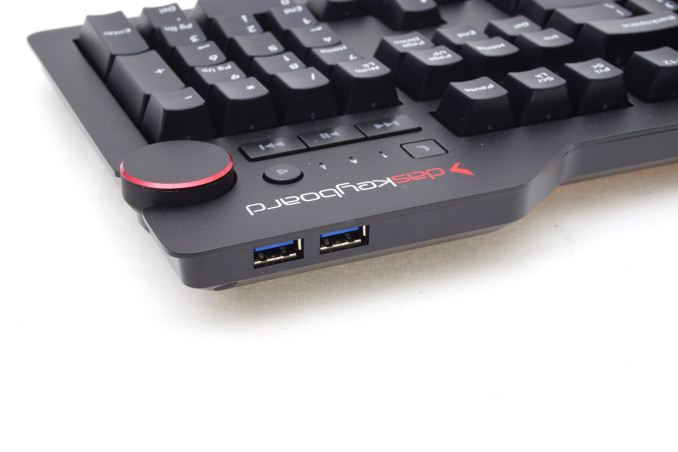

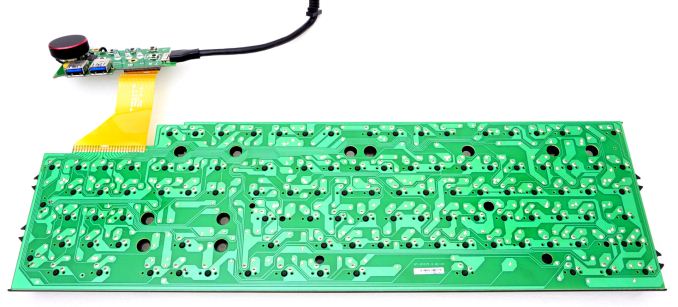
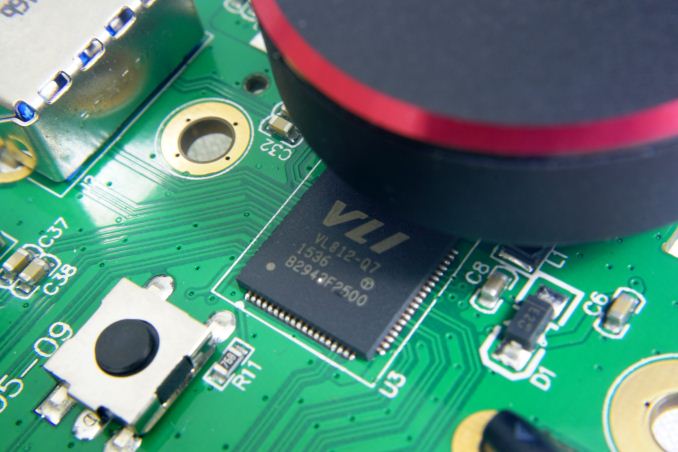
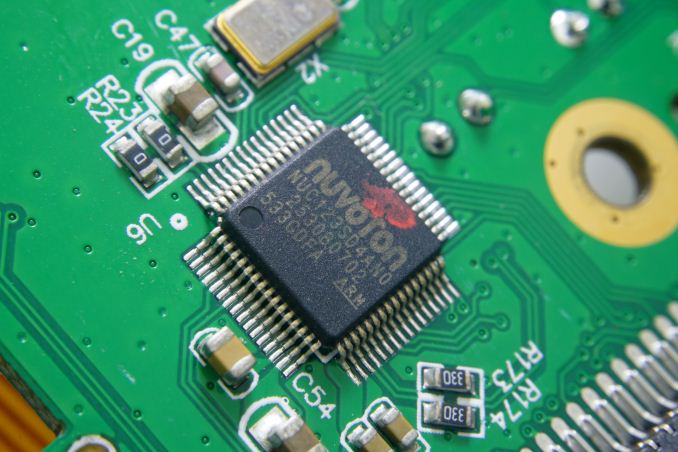








58 Comments
View All Comments
Lolimaster - Tuesday, January 10, 2017 - link
For example, my logitech media keyboard (membrane) uses painted characters but the keycaps and plastic case and it stays the same color (black, means no clear ABS)Murloc - Wednesday, January 11, 2017 - link
what if I don't care about the paint chipping as long as it works?Krause - Wednesday, January 11, 2017 - link
Then you're clearly not looking for a high end mechanical keyboard.AlexanderTheSexy - Wednesday, January 18, 2017 - link
For an actual high end mechanical keboard, you would have to look at the original high end keyboard from IBM. The model M. Build like a tank, and still sought after by many. Fetching prices of around $100-400. You can find more information on this page: http://www.clickeykeyboards.com/Nowadays, there is a newer model build by http://www.unicomp.com/.
Honestly, once you get used to typing on such a keyboard, you never go back. Just give it a try.
Lolimaster - Tuesday, January 10, 2017 - link
My rubber logitech media keyboard has 0 issues being my daily companion for near 10years.buxe2quec - Wednesday, January 11, 2017 - link
Look, I have two mechanical keyboards, one at home and recently another one at work.We all know that rubber keyboards don't last as long, but we'll know that 1 million key presses are already more than enough and the 50 millions of mechanicals are not a REAL need or advantage (unless maybe you are in harsh environments like industrial? maybe!).
We buy mechanical for the feeling and for the noise.
Someone also for performance in gaming (not me) and someone else for status (again not me, but read the internet and you see it immediately).
Membrane keyboards last forever (unless they are 5 dollar a piece) and are fine for almost everyone.
Still, the feeling and sound of mechanicals makes me feel good :)
Not a need.
Jetpil0t01 - Sunday, January 15, 2017 - link
Perfect example would be any of the Razer Blackwidow boards, custom switches rated to 80 million presses... But the braided USB cable reliably frays and breaks inside 6 months and its not a spare they sell. Also the LEDs aren't rated to last anywhere near that long, so it's all really just marketing when it comes down to it.Really you should be buying a board based on size, USB hub, media controls and wrist wrest, not switches or longevity. That's coming from someone who has purchased everything from Das and Cherry boards all the way down to cheap Indian and Chinese "fake" boards and really the typing experience and durability has very little to do with price.
Washuai - Monday, January 23, 2017 - link
Speak for yourself. I got into mechanical keyboards, because I was annoyed by replacing membrane keyboards that kept having keys that stopped actuating. I am nice to my hardware ( well outside of something about my fingers wearing not just letters off, but grooves in cheap plastic keys). Keys stopped working on a so called indestructible silicon roll up, board I liked. I was tired of stuff that kept failing and dug in with research and found mechanicals. Honorable mention to compaq membrane board I bought in emergency as was only thing available for sale; That one did not die, but was not what I wanted, still have it, just in case.Quiet typing and changing ergonomic needs, mean I probably will never go back to membrane. I do measurably better wpm on mechanical, while my wrists and forearms thank me for lighter touch actuation.
On an expensive keyboard ( or even just office work horses), who wants some keys that stop being legible in a year? A blank keyboard looks better than that.
I don't mind blank, but I've learned I'm in the minority. Businesses actually need labeled boards. Replace a heavy traffic keyboard with one with blank keys and observe. The results will surprise you and you will have pranked.
BrokenCrayons - Wednesday, January 11, 2017 - link
It's true, durability is a non-reason for purchasing a mechanical keyboard. It's more like a checkbox feature used by marketing departments to help people feel justified in spending 20x more than necessary to get a keyboard for their computers. The same is true of proclaimed performance benefits in computer games that simply cannot be measured or proven valid.The bottom line is that mechanical keyboards exist in the present time because they can be sold for a higher profit due to customer perception that's been built partly on nostalgia for older generations of such keyboards (IBM Model Ms, for example) and partly on the mythology invented by marketing departments. Their increased margins are all the excuse a company needs to produce and sell a $200 keyboard.
I write novels and other lengthy works of fiction (mostly fluff and source material for RPG worlds) and have done so on membrane and mechanical keyboards. The membrane boards I use last just as long and even if I only got 2 years of use out of each one, at $10 each, they'd be a far better value than a $100-200 mechanical keyboard that worked for ten years.
However, pointing that out will just stir the pot up because people who have purchased mechanical keyboards will naturally seek to avoid negative feelings. It's fundamentally human to seek good feelings and the average mind will simply find a way it thinks is rational that refutes your claims.
maximumGPU - Thursday, January 12, 2017 - link
sorry that's not entirely accurate. it's not all customer perception. I don't have any nostalgia for an IBM model (never owned one) and don't care longevity or other marketing crap. I tried a mechanical keyboard and its biggest advantage is the nicer typing feel. The presence of an actuation point on certain variants means i don't have to bottom out the keys, and can therefore type faster and lighter. And therefore it feels nicer. in that regard it's objectively better and i didn't have to perform various mental tricks to rationalize it.I'm certainly not in the minority here either.